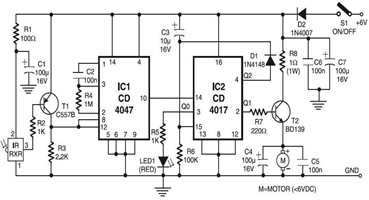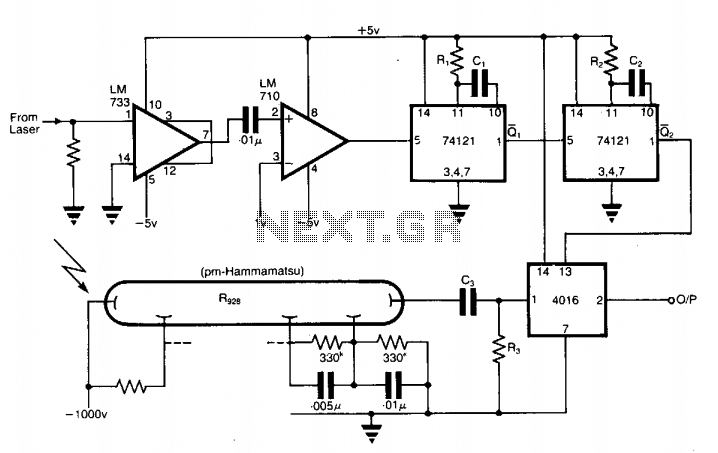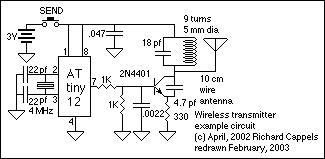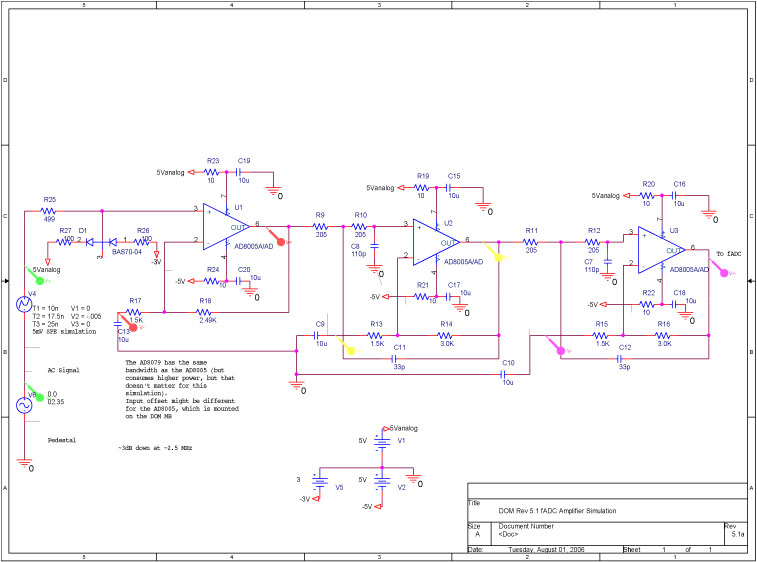
A simple control circuit Lantern
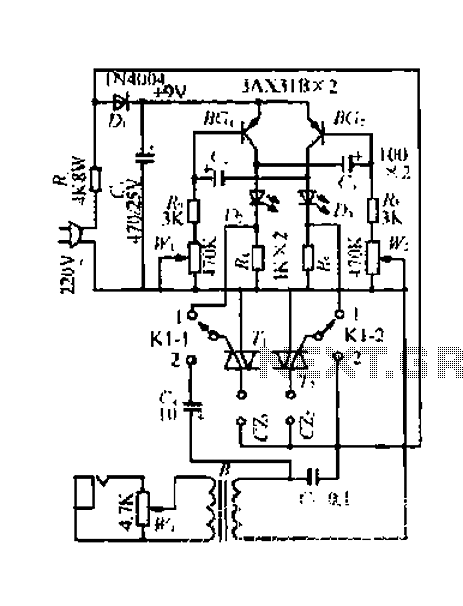
A 220V mains power supply is reduced using a control circuit designed by N. Guanidine D. Yi. The circuit features a spike Bode and provides a +9V voltage supply. It includes components such as a control port (G), a transistor (TG1) for vibration control, and resistors (R) for load management. The circuit also utilizes capacitors (C) for filtering and diodes (D2, D3) to indicate oscillator functionality. The design incorporates a variable frequency oscillator to adjust the output frequency, which is suitable for audio applications.
The schematic described involves a primary voltage reduction from the 220V mains supply, which is essential for safe operation in low-voltage electronic devices. The control circuit utilizes a series of components to manage voltage levels and ensure stable operation. The inclusion of a voltage regulator allows for a consistent +9V output, which is crucial for powering sensitive electronic components.
The control port (G) acts as the interface for external signals, allowing for adjustments to the circuit's behavior based on user input or environmental changes. The transistor (TG1) is responsible for amplifying the control signals to drive the vibration mechanism, which can be used in various applications, including audio devices and other electronic systems that require dynamic feedback.
Resistors (R) are strategically placed within the circuit to limit current and protect sensitive components from overload. The design also features capacitors (C) that serve as filters to smooth out voltage fluctuations, ensuring a stable output. The diodes (D2, D3) are critical for indicating the operational status of the oscillator, allowing for easy troubleshooting and maintenance.
The variable frequency oscillator is a key element in this design, enabling the adjustment of output frequencies to match specific requirements. This feature is particularly beneficial in audio applications, where frequency modulation can enhance sound quality and performance. Overall, this circuit design exemplifies a robust approach to managing high-voltage inputs while providing a reliable low-voltage output for various electronic applications.220V mains drop by n guanidine D. Yi stream. C. After the spike Bode + 9V voltage supply control circuit. Port G, TG1 to Shang tube vibration: R. w, and hurricane.. w Partial e agle as base resistance: R4, hurricane to pull the load collector il; C, f. Weeding table for the capacitor; D2 D3 is made Wherever: rice tube, Sichuan to indicate oscillator work like two exhausted withered rough 1. w/Ir Pei variable frequency vibration caries: Day, W, C4, c, Hungary hoof audio input. Kl disobedient cry for the conversion. Dial in vain r Fu wash when color. sparkle frequency i rate a .J 0 Head section chief, dial-sectional 2 - color -) TI-l sparkle * ji Jazz Music Festival with impaired rhythm coup s coup.
The schematic described involves a primary voltage reduction from the 220V mains supply, which is essential for safe operation in low-voltage electronic devices. The control circuit utilizes a series of components to manage voltage levels and ensure stable operation. The inclusion of a voltage regulator allows for a consistent +9V output, which is crucial for powering sensitive electronic components.
The control port (G) acts as the interface for external signals, allowing for adjustments to the circuit's behavior based on user input or environmental changes. The transistor (TG1) is responsible for amplifying the control signals to drive the vibration mechanism, which can be used in various applications, including audio devices and other electronic systems that require dynamic feedback.
Resistors (R) are strategically placed within the circuit to limit current and protect sensitive components from overload. The design also features capacitors (C) that serve as filters to smooth out voltage fluctuations, ensuring a stable output. The diodes (D2, D3) are critical for indicating the operational status of the oscillator, allowing for easy troubleshooting and maintenance.
The variable frequency oscillator is a key element in this design, enabling the adjustment of output frequencies to match specific requirements. This feature is particularly beneficial in audio applications, where frequency modulation can enhance sound quality and performance. Overall, this circuit design exemplifies a robust approach to managing high-voltage inputs while providing a reliable low-voltage output for various electronic applications.220V mains drop by n guanidine D. Yi stream. C. After the spike Bode + 9V voltage supply control circuit. Port G, TG1 to Shang tube vibration: R. w, and hurricane.. w Partial e agle as base resistance: R4, hurricane to pull the load collector il; C, f. Weeding table for the capacitor; D2 D3 is made Wherever: rice tube, Sichuan to indicate oscillator work like two exhausted withered rough 1. w/Ir Pei variable frequency vibration caries: Day, W, C4, c, Hungary hoof audio input. Kl disobedient cry for the conversion. Dial in vain r Fu wash when color. sparkle frequency i rate a .J 0 Head section chief, dial-sectional 2 - color -) TI-l sparkle * ji Jazz Music Festival with impaired rhythm coup s coup.
